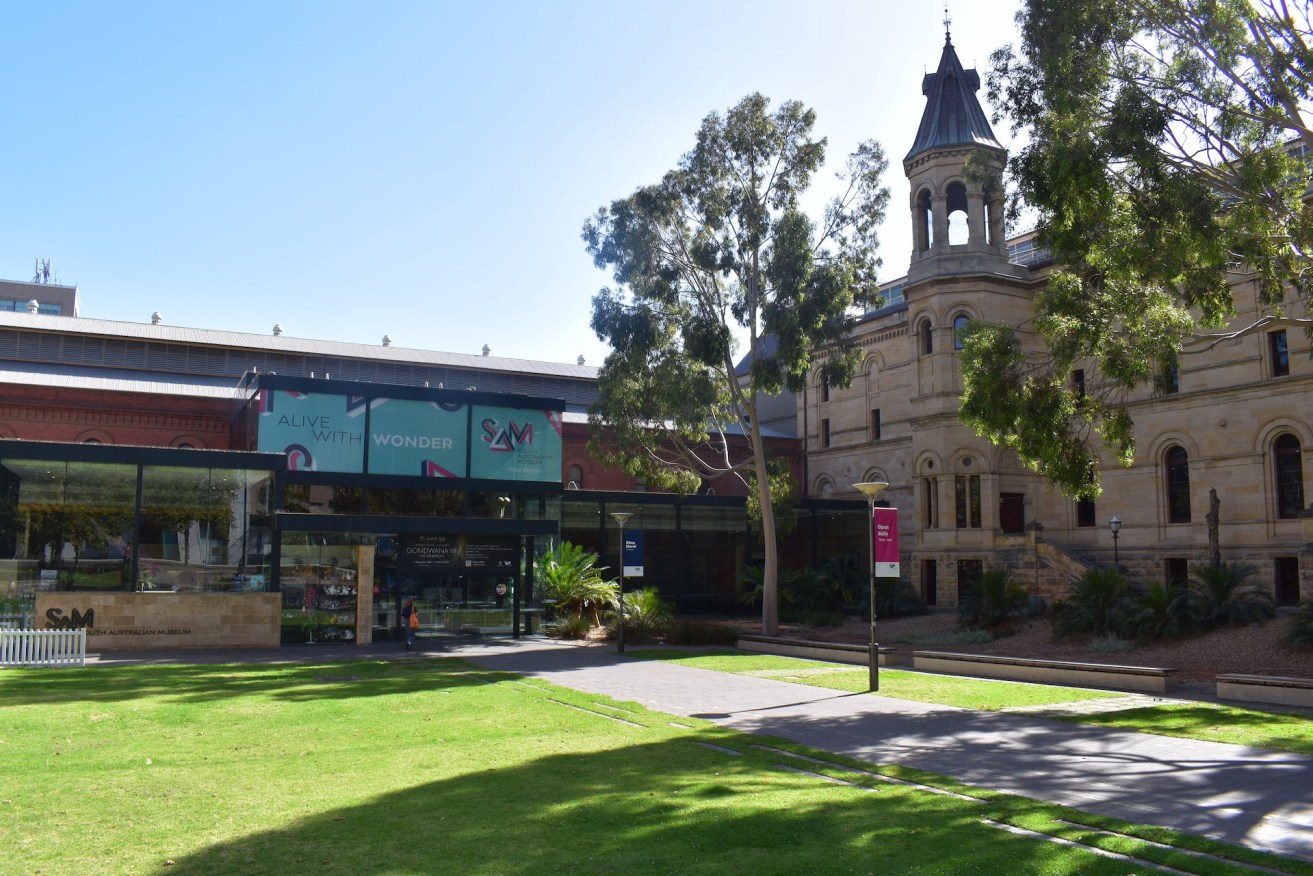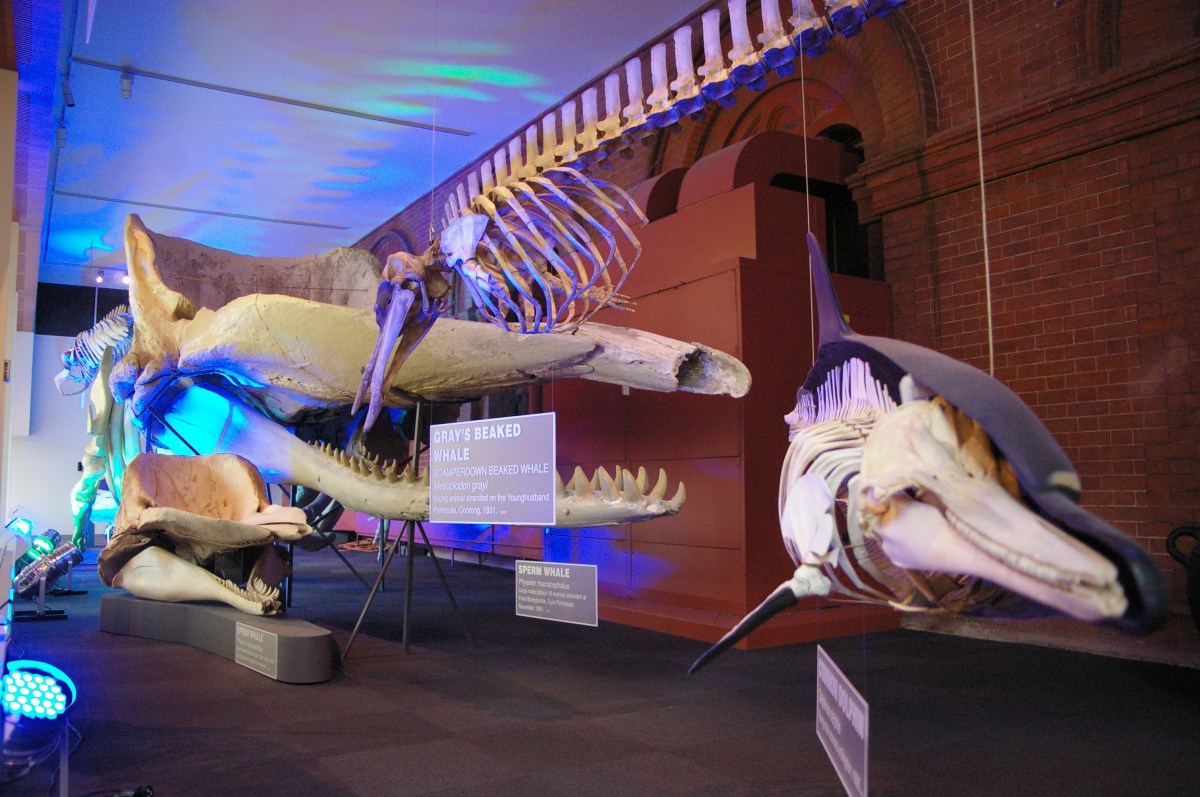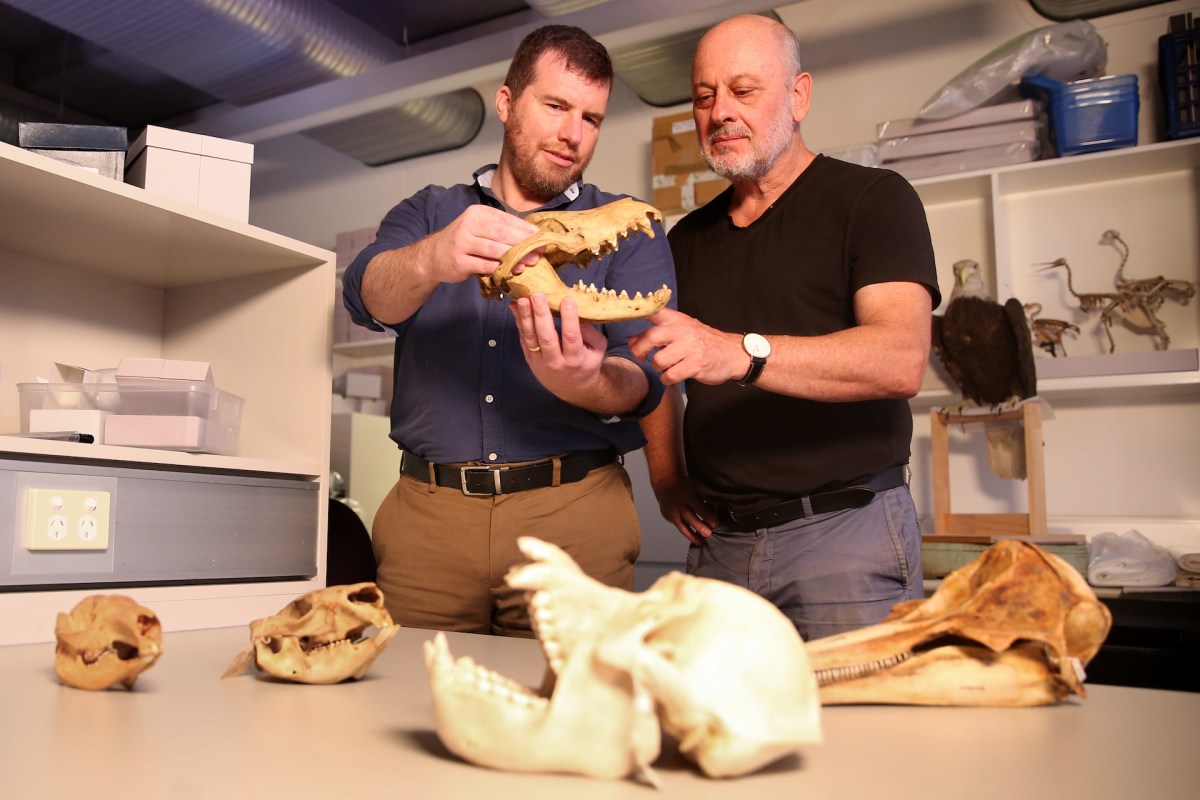Tim Flannery warns SA Museum restructure could ‘destroy’ the institution
Internationally renowned Australian scientist Tim Flannery has warned of the “death” of the South Australian Museum if it continues in its current direction, after staff were told that all research positions would be abolished as part of its restructure.


The South Australian Museum. Photo: Charlie Gilchrist/InDaily
The acclaimed scientist, researcher, explorer and climate advocate told InDaily that “from my understanding of it, the kind of direction that is being set for the South Australian Museum could result in the death of an institution – one of the most important institutions in the state”.
Flannery was director at the SA Museum from 1999-2006 and was principal research scientist in mammalogy at the Australian Museum from 1984-1999. He was named Australian of the Year in 2007 and has been described by David Attenborough as “in the league of the all-time great explorers like Dr David Livingstone”.
An internal museum document seen by InDaily shows the SA Museum is proposing to abolish all 27 ongoing positions in the Research and Collections Division. In their place, 22 new positions will be created: 10 will be dedicated to curatorial research, 10 for collection management and two focussed on digitisation, access and preservation of the SA Museum’s collections.
Speaking to InDaily, Flannery said “the collections are there for research, and without research, the collections wither and die, and with that the museum withers and dies”.
“It is extremely important that you have knowledgeable people researching those collections in perpetuity,” he said.
“Being a researcher in a museum like South Australia is like being a high priest in a temple. You have been passed on the sacred objects by your predecessor who has looked after them through their career. That chain of care goes back to the foundation of the state of South Australia – the foundation of the museum… but break the chain of care and you destroy the museum.”
Speaking about the importance of museums in the 21st century, Flannery said that “museums are the repositories of indisputable fact” where objects can be interrogated and analysed.
“All the information is there. These are our corpus callosum. They’re our memory – indisputable memories of our civilisation – and it is absolutely critical that they are built upon and researched properly and cared for into the future,” he said.
“Without that repository of indisputable fact, we lose ourselves, we lose the meaning of our place in the world today, we lose our past, and we lose the potential for future research, future understanding of things we don’t possess today, but which may be critically important to the future.”
The museum document – a PowerPoint presentation given to staff on Monday – said that “[w]hile it proposed that all ‘current’ roles are abolished, it is intended that as many ongoing employees as possible will be placed in the new structure at their substantive classification level, where this meets the requirements of the new structure”.
In a statement, SA Museum CEO Dr David Gaimster said that “[a]t the end of this process, if current employees are not placed in the new structure, they will be redeployed to other roles and provided with career transition support. The proposed loss in full-time equivalent positions is five (27 to 22).”
“No staff member will be put into a lower grade role. Our commitment is finding suitable roles either in the structure or across the sector at current levels. For ongoing employees looking to go into a role at lower grades we have policies to support income maintenance,” he said.
The presentation said staff consultation would be open until Good Friday, March 29, after which a final organisational structure will be presented and staff could express interest in the new positions.
The current research positions at the museum range from a Senior Researcher of Terrestrial Invertebrates to a Collections Manager of Archaeology & Restricted Material, a Researcher into Aboriginal Culture & Art to a Senior Researcher into Paleontology, among other roles.
The SA Museum has been undertaking research since its establishment in the 1800s. According to the 2019-20 Annual Report for the South Australian Museum Board, in that year research grant funding totalled $2,880,134 across 33 grants. The report said that a total of 152 publications were produced by the SA Museum, including 135 peer-reviewed papers and 17 conference papers.
According to the Public Service Association of SA, the main union representing public service workers, SA Museum researchers have discovered more than 1000 new species, including 46 now listed as threatened.
The SA Museum’s website states that “[o]ur research activities not only benefit, inform and inspire the Galleries and many of the Exhibitions on display at the Museum, but have an impact that reaches far beyond the buildings we occupy in Adelaide”.
“The academic research status of the South Australian Museum is strong among museums nationally,” it states.
“It is a leader in remote and regional community engagement, and in Australian Aboriginal heritage and scientific research.”
The South Australian Museum Act 1976 states that one of its core functions is “to carry out, or promote, research into matters of scientific and historical interest” and “to accumulate and care for objects and specimens of scientific or historical interest”.
The proposed replacement positions will be primarily curatorial and collection management roles. This includes roles such as Curator of Historical/World Cultures, a Collections Manager of Archaeology & Restricted Material and a Curator of Mineralogy.
InDaily previously reported that the new SA Museum chief executive Dr David Gaimster plans to shake up the museum by rethinking its layout, creating a larger temporary exhibition space and rotating current permanent exhibitions.
Speaking previously to InDaily about the research undertaken at the museum, Gaimster said “we’re a very, very active research institution, and one of the most active in the Southern Hemisphere”.
“We have a dedicated team of researchers working in various areas of the biological sciences and human cultures; that work is extensive and every year we report that we publish around 150 or so peer-reviewed journal articles and conference proceedings and a whole range of different outputs,” he said.
“You could argue that despite all of that investment, all of that work, very little of that content is surfacing in the museum.
“We’ve basically got a research museum and a public museum, but there’s very little connection between the two. So, we’re not seeing the outcome of that work for our audiences.
“We’re rethinking that model of operation so that we can better connect our research with the public museum and enable our audiences to discover that new content and those discoveries and that research both on site and online going forward.”

The Museum’s Sperm Whale with friends in the front foyer. Photo: Charlotte Rollinson courtesy of the South Australian Museum
The PSA said in a statement that “[a] push by the South Australian Museum management to decimate natural science research programs will result in the once-proud institution becoming more of a theme park than a serious contributor to ongoing scientific knowledge”.
“Included among the staff whose roles will be axed are world-class scientists undertaking cutting-edge DNA research on the collections,” it said.
It said that the 22 “mostly lower level positions… bear little resemblance to the existing roles” and that “[t]his effectively pushes out many of the research staff who have made a significant contribution to advancing scientific knowledge over many years”.
The statement said there was minimal consultation with staff members, and no apparent consultation with broader stakeholders or long-term research partners during the museum’s internal review of its science and research programs.
It also said that local, interstate and international research partnerships will cease under the new plan.
“PSA members working as researchers at the museum say jobs in the new structure have been downgraded, as the focus moves towards presenting more front-of-house exhibitions and increasing the Museum’s focus on First Nations cultural history,” the statement said.
“Staff also have concerns about how the museum’s existing collections will be maintained and managed should there be an exodus of experienced and qualified staff and with the move to broadening the curatorial and collection duties of remaining staff.”
In response, Gaimster said that during its review into Research and Collections operations, the Museum Board interviewed staff from every department to make an informed view. He said the museum was also at pains to alert stakeholders and research partners prior to the announcement.
Gaimster said that the museum will be able to continue maintaining and managing its collection.
“Currently we operate with a high degree of subject specialisation, which leaves many parts of our collections without management cover,” he said.

Professor Kris Helgen and Professor Tim Flannery at the Australian Museum. Photo: James Alcock/PR Handout Image
Concerns about the future direction of the museum have also been raised in parliament.
In parliamentary question time last week, Opposition deputy leader John Gardner relayed concerns raised with him by staff at the South Australian Museum about its future.
His questions addressed to Arts Minister Andrea Michaels related to the removal or dramatic change of museum exhibitions, the future of scientific study at the museum, the cutting of jobs under the restructure, underfunding of the museum, and the possibly that its evolutionary biology unit could be shut down.
The museum said that it will continue operating the Australian Biological Tissue Collection, but that it “is unable to continue to support the maintenance and staffing for the molecular lab based at the University of Adelaide”.
In one of his questions, Gardner asked whether the South Australian Museum would “continue to engage in scientific study and research under its new strategic plan,” explaining that research staff at the museum had been told not to apply for grants through the University of Adelaide, the Australian Research Council, or Australian Biological Resources study grants.
In response, Michaels said the museum would continue to undertake research, but that “what Dr Gaimster and the leadership team are looking at is more focussed research, in terms of matching that in with the curatorial and the exhibitions and telling our South Australian story”.
When asked whether staff members would be made redundant under the restructure, she said she was not aware of any moves in that direction.
“I’m not aware that any staff have been advised of that yet and quite frankly, I think that couldn’t possibly happen given we haven’t even gone through the public consultation phase of what the strategic vision is for the museum.”
In a statement provided to InDaily, Gaimster said that “[t]he Museum has a long and successful history in engaging in a wide range of research collections-related activities and this will continue.”
“What the Museum is looking at is how best to maximise the effectiveness of that research for the public interest and engagement.
“We will not reduce our investment in research, but will obtain better outcomes from it, particularly for the public. At the moment we are serving a narrow range of research interests. Going forward, we want to be at the heart of the knowledge economy. We intend it to be much more accessible and visible and deliver stronger outcomes for all South Australians.
“We have seen widespread positive feedback already in response to our Re-imagining announcement. The Museum has a very bright future and we look forward to engaging South Australians in our journey of transformation.
“The Museum remains fully committed to research and the promotion of matters of scientific and historical interest but this must be translatable for the benefit of all South Australians.
“The Museum will connect its audiences to its research and collections through gallery renewal, special exhibitions, digital platforms, public programs, and its wider engagement offerings.
“The South Australian Museum has hardly changed in the last 30 years and is at risk of losing relevance. The Re-imagining project and investment in curatorial and collections management capability represent critical steps in the creation of the compelling contemporary museum of the 21st-century.”




